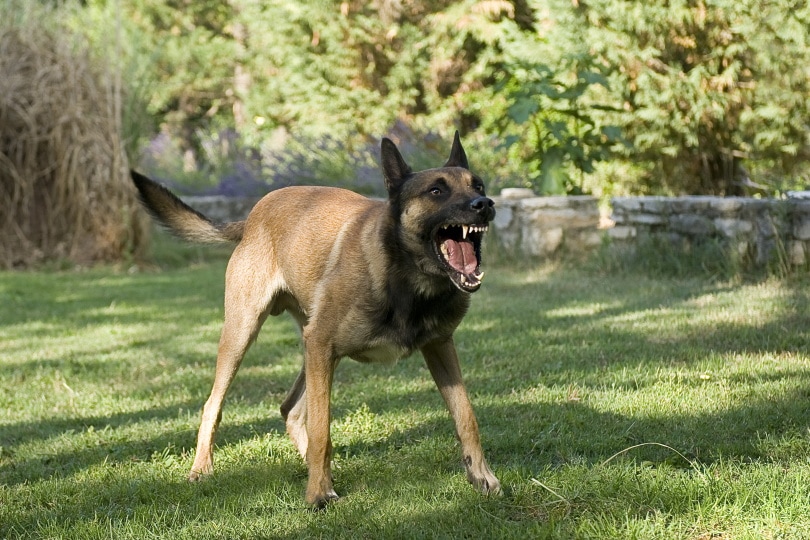West Highland Doxie (Westie & Dachshund Mix): Pictures, Care Guide, Temperament & Traits
Updated on

Click to Skip Ahead
The world of designer dogs keeps growing larger and we learn more about selectively bred mixed breeds every day. Loyal, spirited, and entertaining, the West Highland Doxie is an adorable mix between the West Highland White Terrier and Dachshund, two parent breeds that have some very distinct differences but also a few similarities.
Like with any dog, it’s important to know what you can expect from the breed, or in this case breeds, so that you can determine whether they are well suited for you and your lifestyle. Keep reading to learn all about the West Highland Doxie and what you can expect if you decide to make one part of the family.
Breed Overview
| Height: | 8–12 inches |
| Weight: | 12–25 pounds |
| Lifespan: | 12-15 years |
| Colors: | White, black, brown, red, brindle, fawn, cream |
| Suitable for: | Those looking for a companion, families with older children |
| Temperament: | Loyal, friendly, curious, spirited, stubborn |
When you mix a Dachshund and a West Highland Terrier, you are sure to get a small, compact dog weighing anywhere between 12 and 25 pounds and reaching no more than 12 inches in height.
When it comes to the coat, you can get a wide variety of colors from Dachshund genetics or the pure snow white from the Westie. The coat texture can vary significantly by individual and will range in length, thickness, and coarseness.
You can expect a spirited companion that is as loving and loyal as they are stubborn and curious. They are well suited for those seeking a friendly lap dog, and for families with older children.
West Highland Characteristics
West Highland Doxie Puppies
The West Highland Doxie isn’t the most readily available designer breed, so you will have to do some research to find a breeder. There’s always a chance you may stumble upon this mix in a shelter or rescue as well. If you’ve decided to bring home one of these puppies, you need to ensure you find a reputable breeder that does the proper health testing for their dogs to ensure you get the healthiest pup possible.
The price of a West Highland Doxie puppy can vary from $500 to $1,200 from a breeder. Rescues and shelters often charge anywhere between $75 to $400 for adoption fees depending on the facility or organization.
Any puppy should begin training as soon as they arrive in their new home. Not only will these puppies have small bladders and need to go potty frequently, but they will have lots of energy and will need an appropriate outlet.

Temperament & Intelligence of the West Highland Doxie
If well trained and properly socialized, the West Highland Doxie can make a wonderful pet that will enjoy being around people. Both parent breeds are loyal and loving dogs that are very affectionate with their families.
They tend to be open to strangers if socialized from an early age, though they will likely err on the side of caution at first. Both Dachshunds and Westies tend to be protective of their families and watchful of their territory, so they can get a bit snappy if they aren’t used to new people.
These dogs are intelligent and stubborn and have a way of figuring out how to get what they want. You can also expect lots of barking with this mixed breed, as both parents are on the top of the list when it comes to being vocal. If you don’t want a dog that barks a lot, you may need to consider other options.
While they can be taught to get along well with older children, it is generally accepted that they shouldn’t be allowed around very young children, as they can’t always be trusted. They are fairly playful and will enjoy being in the company of older children if they are treated with respect and given their own space. Given their genes, it’s no surprise that the West Highland Doxie continues to have a developed prey drive. This can make their attention span short when outdoors as they are constantly sniffing around for the nearest animal. If raised with other pets from a young age they may well tolerate them, but we shouldn’t assume that they will.
Are These Dogs Good for Families? 👪
West Highland Doxies can make excellent family pets when well socialized. They often do much better with families that have older children, as they are of an age where they know how to gently handle small dogs and treat them with respect.
Since younger children are often rougher by nature and do not understand how to treat pets just yet, they will be more at risk of being bitten since these dogs have a lower tolerance and may growl, snap, nip, or bite if they feel defensive or overwhelmed.
Each dog is an individual and anyone with young children considering this mixed breed should raise the dog from a puppy and ensure they are socialized well and always kept under close supervision when in the presence of children.
Does This Breed Get Along With Other Pets?
These dogs will often get along well with other dogs, especially if they are exposed to them starting from a young age. They do tend to exhibit “small dog syndrome,” where they believe they are the boss and act like they are bigger than they are. This can be problematic if they become aggressive with larger dogs, so it’s important to keep this behavior in check with proper training.
When it comes to cats and other small pets, early socialization is key to a household of harmony. Both the Dachshund and the Westie were developed as hunting dogs, so they have a natural prey drive that can take over when in the presence of smaller animals.
Things to Know When Owning a West Highland Doxie:
Food & Diet Requirements 🦴
West Highland Doxies should be fed a high-quality diet that is appropriate for their age, size, and activity level. Whether it is a commercial food or home prepared, it must be nutritionally balanced to suit their needs. It’s always a good idea to get dietary advice from your veterinarian if you have any questions or concerns.
It is going to be very important that you prevent them from becoming overweight. Not just for the health concerns associated with obesity in general, but with Dachshund genetics, these dogs will be predisposed to intervertebral disc disease and excess weight can put a lot of strain on their backs. Make sure to feed appropriate quantities at mealtime, offer treats sparingly, and avoid table scraps.
Exercise 🐕
Both the Dachshund and Westie are playful and energetic breeds that will require at least 30 to 60 minutes of exercise each day. They will enjoy a variety of activities like outdoor play, daily walks, and can even excel in canine sports and agility.
It’s very important to keep up with a regular exercise routine with these dogs for the sake of their health and to prevent them from becoming overweight.
Training 🎾
You are sure to have an intelligent, curious dog on your hands that will have an undeniable stubborn, independent streak. When it comes to trainability, you can expect some challenges and will need to remain consistent, firm, patient, and focus on positive reinforcement techniques.
You don’t want the West Highland Doxie to lose interest, so it’s best to keep training sessions short, sweet, and fun – lasting no more than 10 to 15 minutes each session. Potty training will likely prove a challenge, as both parent breeds can be difficult to potty train, which is fairly common among smaller dogs.
Grooming ✂️
The West Highland Doxie can have a varied coat with length ranging from the short, sleek coat of the Dachshund to the medium to long length and coarse double coat of the Westie. Depending on which coat the individual gets, the grooming needs are subject to vary.
Shorter, sleeker coats will be much easier to care for while the longer, coarser double coated dogs will need regular brushing to prevent tangles and will likely need more regular trimming. Regardless, you can expect a moderate amount of shedding from these designer dogs.
It’s always recommended to keep a close eye on their nails and trim them as needed to prevent overgrowth. Ears should be checked often for cleanliness and should be wiped clean of any dirt or debris. If there is long hair near the eyes, proper upkeep will be needed to prevent staining and ensure they can see clearly.
Since dental disease is common in small dogs, you should start brushing teeth at an early age and remain on a strict dental care regimen so that you can prevent dental disease altogether.
Health and Conditions 🏥
Since both parent breeds are prone to a range of health conditions, it’s important to understand what could affect your precious pup. Responsible breeding is vital to producing healthy dogs and improving breeding stock which is why finding a reputable breeder is so important.
- Allergies
- Luxating patella
- Eye conditions
- Intervertebral Disc Disease
- Hip dysplasia
- Obesity
Minor Conditions
- Allergies: Allergies occur due to an overactive or hypersensitive immune system that reacts to a specific substance, or allergen. Most allergies come from an immune response to certain proteins, plants, insects, animals, or foods. Both Westies and Dachshunds are prone to allergies and skin conditions associated with the allergic reaction.
- Luxating Patella: Luxating patella refers to the kneecap being dislocated or out of place. dislocated. Both the Dachshund and Westie are prone to luxating patella, which has varying degrees of severity.
- Eye Conditions: West Highland Doxies will naturally be prone to certain eye conditions including dry eye, cataracts, and glaucoma since both parent breeds are predisposed to eye problems, especially in their later years.
Serious Conditions
- Intervertebral Disc Disease (IVDD): Intervertebral Disc Disease, or IVDD is a degenerative disease that affects the spinal cord and causes a range of painful mobility issues. IVDD can be described as ruptured, slipped, bulging or herniated disks and is common in the Dachshund.
- Hip Dysplasia: Hip dysplasia occurs during growth and results in the loosening of the hip joint, leading to pain and dysfunction. As the dog grows the cartilage and bone of the hip will wear down and over time lead to arthritis, muscle atrophy, pain, and mobility issues.
- Obesity: Obesity refers to excess body fat and can lead to some very serious health problems including cancer, diabetes mellitus, heart disease, hypertension, osteoarthritis, faster degeneration of affected joints, urinary bladder stones, and complications with anesthesia. Both breeds can easily become obese, so prevention is important.
Male vs Female
When it comes to temperament, there’s not much difference between males and females as each dog has their own unique personality traits that they can get from one or both parent breeds. Males tend to get larger than females, but since these dogs are a mixed breed, they vary slightly in size already.
Of course, males can begin to act differently when they reach sexual maturity, which isn’t specific to any breed. They may become more territorial, begin marking, and have a desire to wander. This can easily be remedied by neutering, which is less expensive and an easier surgery overall when compared to spaying a female.
Regardless of whether you have a male or female West Highland Doxie, you should talk to your veterinarian about the health and behavioral benefits of spaying and/or neutering and the best time to have it done.
3 Little-Known Facts About the West Highland Doxie
1. Dachshunds Were Bred to Hunt Badgers
Dachshunds were developed in Germany for the purpose of hunting badgers. Their short legs keep them low to the ground to better track scent, and their narrow, long bodies allow them to crawl and maneuver well in burrows. They may be small in size, but they are incredibly fierce and courageous hunting dogs.
2. West Highland White Terriers Were Bred to Hunt Rats
Westies were also bred as hunting dogs, but they originated in Scotland and were given the purpose of hunting rats and other vermin. Their white, coarse coats were a sought-after trait to help hunters identify their dogs during the hunt thanks to those bright, snow-white coats.
3. The West Highland Doxie Origin Is Unknown
Nobody knows or is sure when the designer breed now known as the West Highland Doxie was first introduced. There are many designer dogs being bred nowadays, and while some can be traced back to their origins, these adorable little pooches remain a mystery.
Final Thoughts
The West Highland Doxie is an adorable mix between the West Highland White Terrier and the Dachshund. They are small dogs weighing no more than 25 pounds but can vary significantly in looks including body shape, coat texture, coat color, and head shape. These dogs are known for being loyal, loving, and friendly but can also be stubborn, independent, and a challenge to train. They are best suited for families with older children or adults seeking a lap-sized companion.
See Also:
- West Of Argyll Terrier (Westie & Beagle Mix): Pictures, Care Guide, Temperament & Traits
- Westie & Corgi Mix Dog Breed: Pictures, Care Guide Temperament & Traits
Featured Image Credit:














